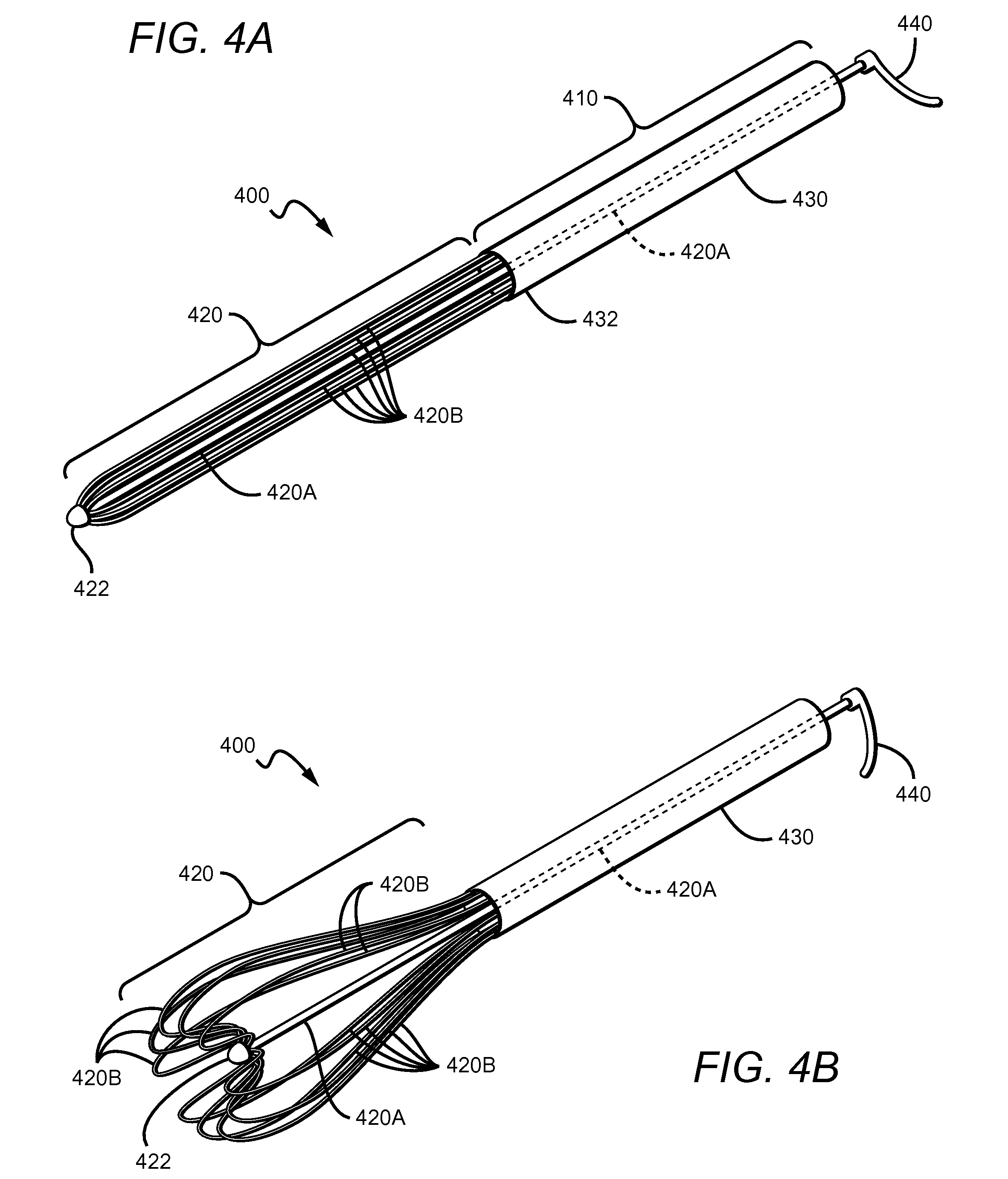Nasal Catheter With Internal And External Air Flows
a technology of internal and external air flow and catheter, which is applied in the field of nasal catheters, can solve the problems of lack of enablement and user discomfort of the tube, and achieve the effect of small cross-sectional area
- Summary
- Abstract
- Description
- Claims
- Application Information
AI Technical Summary
Problems solved by technology
Method used
Image
Examples
Embodiment Construction
[0021]In FIG. 1 a nasal catheter 100 generally includes a proximal portion 110, a distal portion 120 with a nub 122 at the end, a removable sheath 130, and a nose clip 140.
[0022]The proximal portion 110 is a wire of satisfactory length, which is currently contemplated to include lengths sufficient to reach from the external nares to the posterior choanae. Currently preferred lengths are 5-10 cm, with this and all ranges being inclusive of their endpoints unless the context clearly dictates the contrary. Wire 110 can be made of any suitable material or materials, provided they are sufficiently flexible to be inserted in the nasal passageway of a typical human without causing substantial damage to the tissues, but also having sufficient column strength to enable proper insertion of the distal portion. The wire 110 should also be non-kinkable under ordinary operating conditions. Wires 110 can be mono- or poly-filamentous, and in the later case can be twisted, wound, or woven. At presen...
PUM
 Login to View More
Login to View More Abstract
Description
Claims
Application Information
 Login to View More
Login to View More - R&D
- Intellectual Property
- Life Sciences
- Materials
- Tech Scout
- Unparalleled Data Quality
- Higher Quality Content
- 60% Fewer Hallucinations
Browse by: Latest US Patents, China's latest patents, Technical Efficacy Thesaurus, Application Domain, Technology Topic, Popular Technical Reports.
© 2025 PatSnap. All rights reserved.Legal|Privacy policy|Modern Slavery Act Transparency Statement|Sitemap|About US| Contact US: help@patsnap.com



